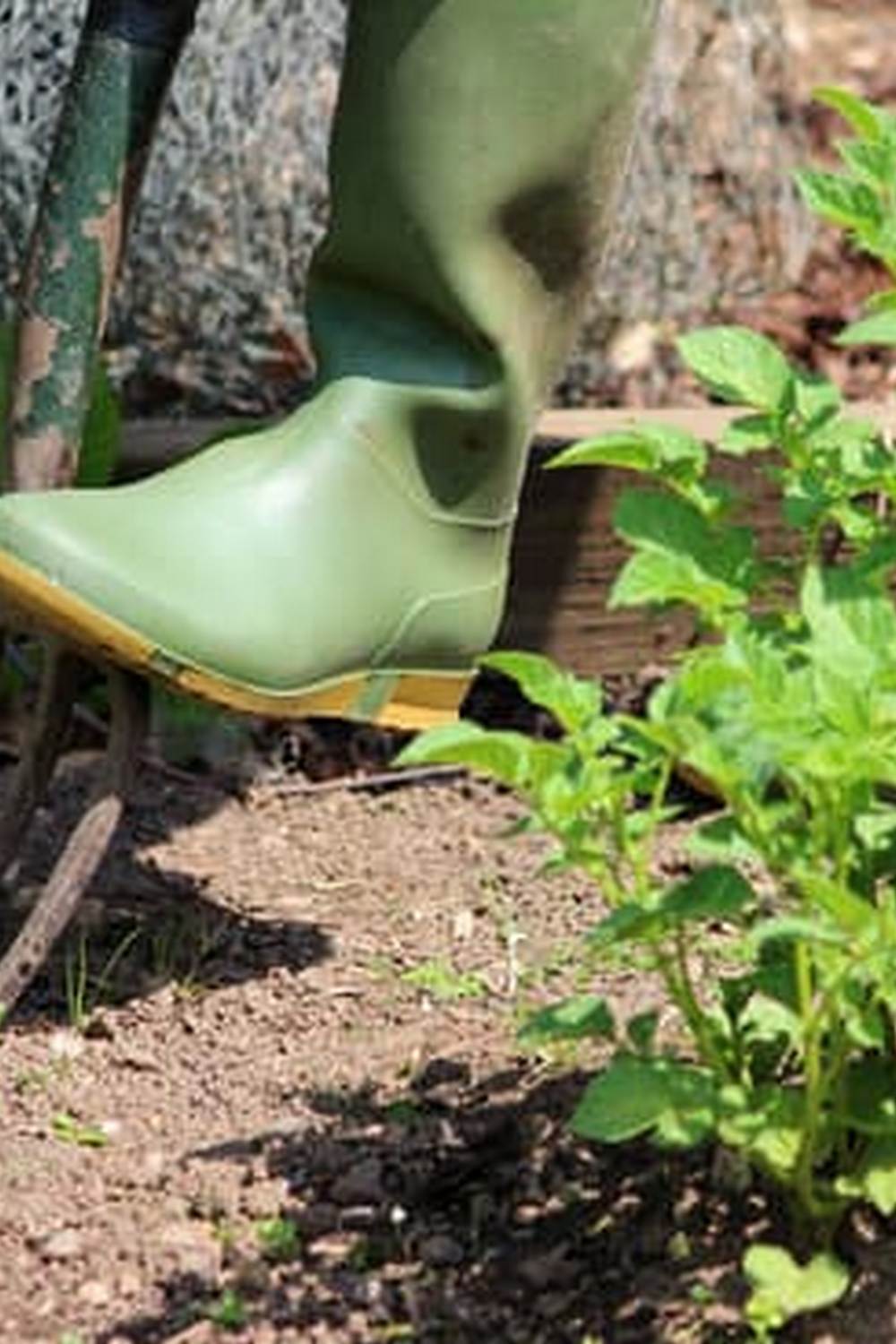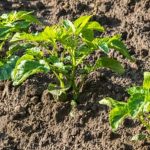Home gardening vegetables in Sri Lanka has become increasingly popular in recent years, as more and more people seek to take control of their food sources and live healthier, more sustainable lifestyles. With the rising interest in organic produce and the desire to reduce food miles, home gardening is a practical solution for many Sri Lankans.
In this article, we will explore the ins and outs of home vegetable gardening in Sri Lanka, from its benefits to the best vegetables to grow, as well as tips for success and available resources.
In a country renowned for its vibrant agriculture and rich soil quality, home gardening has always had a strong presence in Sri Lanka. However, with the growing concern over pesticides and chemical additives used in commercial farming, many have turned to cultivating their own vegetables at home. The benefits are countless, from having access to fresh, organic produce at their fingertips to reducing their carbon footprint by growing food locally.
By understanding the climate and growing conditions specific to Sri Lanka, individuals can maximize their vegetable yield at home. From selecting the right crops to managing pests and diseases that may be prevalent in the region, there are several key factors that can contribute to a successful home garden. Throughout this article, we will delve into these aspects while providing valuable tips and support for those looking to venture into home vegetable gardening in Sri Lanka.
The Benefits of Growing Vegetables at Home in Sri Lanka
Home gardening vegetables in Sri Lanka is not only a sustainable practice but also provides numerous benefits. One of the major advantages of growing vegetables at home is the availability of fresh and healthy produce. By having a home garden, individuals have access to organic and pesticide-free vegetables, contributing to their overall well-being.
Additionally, home vegetable gardening allows for cost savings. With the rising prices of groceries, especially fresh produce, cultivating one’s vegetables can significantly reduce the expenses related to purchasing vegetables from the market. Moreover, it can also serve as an additional source of income if surplus vegetables are sold or shared within the community.
Another benefit is the positive environmental impact. By engaging in home gardening, individuals reduce their carbon footprint by minimizing transportation emissions associated with importing vegetables. Furthermore, it promotes biodiversity in residential areas and contributes to a greener environment.
Overall, growing vegetables at home in Sri Lanka can lead to better health, financial savings, and environmental sustainability.
| Benefit | Description |
|---|---|
| Fresh Produce | Access to organic and pesticide-free vegetables |
| Cost Savings | Reduction in grocery expenses and potential additional income |
| Environmental Impact | Contribution to a greener environment and biodiversity |
Best Vegetables to Grow in a Home Garden in Sri Lanka
When it comes to home gardening vegetables in Sri Lanka, it’s essential to choose the right vegetables that thrive in the local climate and soil conditions. Some of the best vegetables to grow in a home garden in Sri Lanka include brinjal (eggplant), okra, snake gourd, bitter gourd, and tomatoes. These vegetables are well-suited to the warm and humid climate of Sri Lanka and can be grown successfully by both beginners and experienced gardeners.
Brinjal, also known as eggplant, is a popular vegetable in Sri Lankan cuisine and can be easily grown in home gardens. Okra is another versatile vegetable that grows well in Sri Lanka’s climate and is a staple ingredient in many traditional dishes.
Snake gourd and bitter gourd are also commonly grown at home due to their high demand in local cooking. Additionally, tomatoes are a favorite among home gardeners as they are relatively easy to grow and provide a bountiful harvest.
In addition to these vegetables, leafy greens such as spinach, kale, and fenugreek are also excellent choices for home gardening in Sri Lanka. These greens are packed with nutrients and can be continuously harvested for an extended period, making them ideal for small-scale home gardens. By choosing the right vegetables to grow at home, individuals can ensure a sustainable supply of fresh produce for their families while also contributing to food security at a local level.
Climate and Growing Conditions for Vegetable Gardening in Sri Lanka
Climate in Sri Lanka
Sri Lanka has a tropical climate due to its close proximity to the equator. The country experiences distinct wet and dry seasons, which can vary depending on the region. In the lowland areas, temperatures typically range from 25°C to 30°C, while in the higher elevations, it can be cooler with temperatures ranging from 15°C to 18°C. The southwest monsoon brings heavy rainfall from May to September, while the northeast monsoon occurs from October to January.
Growing Conditions for Vegetable Gardening
The diverse climate of Sri Lanka provides an ideal environment for growing a wide variety of vegetables. With ample sunlight and adequate rainfall, home gardeners can cultivate their crops throughout the year. It is important for aspiring home gardeners to understand the specific growing conditions required for each vegetable they wish to grow. Some vegetables thrive in cooler temperatures at higher elevations, while others require more warmth and moisture found in lowland areas.
Adapting to Local Microclimates
In addition to understanding the general climate and growing conditions in Sri Lanka, it is crucial for home gardeners to consider local microclimates. Factors such as proximity to the coast or elevation can create variations in temperature, rainfall, and wind patterns.
By observing these microclimates within their own neighborhoods, home gardeners can strategically plan their vegetable gardens to maximize growth and yield. Whether living in coastal areas or highlands, adapting gardening practices to local microclimates is essential for successful vegetable cultivation at home in Sri Lanka.
Understanding Soil and Fertilizers for Home Vegetable Gardening in Sri Lanka
Home gardening vegetables in Sri Lanka can be a rewarding endeavor, especially when the right soil and fertilizers are used to promote healthy plant growth. Understanding the soil composition and the proper use of fertilizers are crucial for successful home vegetable gardening in this region.
Soil Composition
The soil in Sri Lanka can vary greatly depending on the region, but most areas have a tropical climate with high rainfall. It is important to test the soil in your home garden to determine its pH level, drainage capacity, and nutrient content.
Sandy soils may require more frequent watering and fertilization, while clay soils may retain too much water, causing root rot. Amending the soil with organic matter such as compost or manure can improve its texture and fertility, providing a better growing environment for vegetables.
Choosing the Right Fertilizers
When it comes to fertilizers for home vegetable gardening in Sri Lanka, organic options are preferred to ensure sustainable and environmentally-friendly practices. Organic fertilizers such as compost, bone meal, and fish emulsion provide essential nutrients for plant growth without degrading the soil quality. Additionally, using natural fertilizers reduces the risk of chemical runoff into water sources, which can harm wildlife and ecosystems.
Applying Fertilizers
Proper application of fertilizers is key to ensuring that vegetables receive the nutrients they need. Slow-release fertilizers can be applied at planting time and provide a steady supply of nutrients over an extended period. Liquid fertilizers can be used as foliar sprays or drenching treatments for a quick nutrient boost. Care should be taken not to over-fertilize, as this can lead to nutrient imbalances and damage plants.
By understanding the soil composition and using appropriate fertilizers, home gardeners in Sri Lanka can create an ideal growing environment for their vegetables while maintaining sustainable practices that benefit both plants and the environment.
Pest and Disease Management in Home Vegetable Gardens in Sri Lanka
Home vegetable gardening in Sri Lanka, like any other place, comes with its fair share of challenges. One of these challenges is managing pests and diseases that can affect the growth and yield of your vegetable plants. However, with the right knowledge and tools, it is possible to effectively manage these issues without resorting to harmful chemicals.
Here are some important tips for managing pests and diseases in your home vegetable garden:
- Regularly inspect your plants for any signs of pests or diseases, such as yellowing leaves, holes in the leaves, or the presence of insects.
- Implement crop rotation to prevent the build-up of pests and diseases in the soil.
- Utilize natural remedies such as neem oil, garlic spray, or soapy water to deter common pests like aphids, caterpillars, and mites.
In addition to controlling pests, it is equally important to prevent and manage diseases that can impact your home-grown vegetables:
- Avoid overhead watering to prevent the spread of fungal diseases.
- Choose disease-resistant varieties of vegetables whenever possible.
- Practice good sanitation by removing diseased plant material and keeping your garden clean and tidy.
By being proactive in managing pest and disease issues in your home vegetable garden in Sri Lanka, you can help ensure a bountiful harvest of healthy, delicious produce.
Tips for Successful Home Gardening of Vegetables in Sri Lanka
When it comes to home gardening vegetables in Sri Lanka, there are a few key tips that can help ensure success. Whether you are a beginner or have been gardening for years, these tips can help you make the most of your home vegetable garden. Here are some valuable tips to keep in mind:
1. Choose the right location: Select a spot in your home garden that receives plenty of sunlight and has good drainage. This is essential for the healthy growth of vegetables.
2. Proper watering: Watering is crucial for the growth of vegetables, especially in a country like Sri Lanka where the climate can be hot and dry. Make sure to water your plants regularly, especially during dry periods.
3. Crop rotation: To prevent soil depletion and minimize disease buildup, practice crop rotation in your home vegetable garden. This involves changing the location of where specific types of vegetables are grown from one season to the next.
4. Use organic fertilizers: Opt for organic fertilizers to promote healthy, sustainable growth in your home vegetable garden. You can create your own compost using kitchen waste and yard trimmings.
5. Companion planting: Research companion planting techniques to understand which vegetables grow well together and which ones should be kept apart to maximize their growth potential.
By following these tips, you can ensure that your home gardening vegetables in Sri Lanka are successful and produce an abundance of fresh, nutritious produce for you and your family to enjoy. Remember that patience, dedication, and regular maintenance are key to a thriving home vegetable garden.
Resources and Support for Home Vegetable Gardening in Sri Lanka
When it comes to home gardening vegetables in Sri Lanka, there are numerous resources and support available to help both novice and experienced gardeners. One of the most valuable resources is the Department of Agriculture, which provides a wealth of information on everything from seed selection to pest management. Additionally, they often conduct workshops and training programs for those interested in improving their gardening skills.
Another valuable resource for home gardeners in Sri Lanka is local agricultural extension services. These organizations offer guidance on best practices for vegetable gardening in the local climate and soil conditions. Additionally, they may provide access to affordable seeds, fertilizer, and other necessary supplies.
For those looking for more hands-on support, joining a local gardening club or association can be incredibly beneficial. These groups often organize community gardens where members can share resources and knowledge with one another.
Furthermore, they may host events such as seed swaps or plant sales, providing opportunities for gardeners to expand their collections without breaking the bank. With these resources and support systems in place, individuals can feel more confident about embarking on their own home vegetable gardens in Sri Lanka.
Conclusion
In conclusion, home gardening vegetables in Sri Lanka offers a plethora of benefits and fulfillment for individuals and families. The act of growing vegetables at home not only provides a sustainable source of fresh produce but also contributes to a healthier lifestyle. Moreover, it allows individuals to reconnect with nature and the food they consume, fostering a deeper appreciation for the environment and sustainability.
The conducive climate and growing conditions in Sri Lanka make it an ideal location for home vegetable gardening. With the right knowledge of soil composition and fertilizers, individuals can successfully cultivate a variety of vegetables in their own backyard. Additionally, learning about pest and disease management is essential to ensure the health and yield of the garden.
Furthermore, the resources and support available for home vegetable gardening in Sri Lanka provide ample guidance for beginners as well as seasoned gardeners. From agricultural extension services to community workshops, there are numerous opportunities to enhance one’s skills and knowledge in home gardening vegetables in Sri Lanka. Overall, engaging in this activity can bring a sense of accomplishment while contributing to food security and sustainability at both individual and community levels.

If you’re looking to get into vegetable gardening, or are just looking for some tips on how to make your current garden better, then you’ve come to the right place! My name is Ethel and I have been gardening for years. In this blog, I’m going to share with you some of my best tips on how to create a successful vegetable garden.





